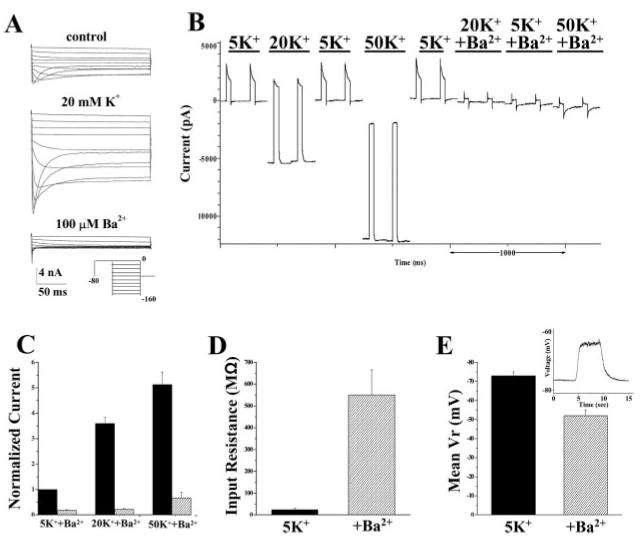Fig. 1.

Kir currents contribute to the resting conductance in SCA. A: Typical voltage-step response (protocol depicted in inset) in 5 mM [K+]o (top), 20 mM [K+]o. (middle), and 5 mM [K+]o + 100 μM Ba2+ (bottom). B: Small voltage steps (-80 to -40 mV, ∼5 Hz) in SCA elicits a robust current, which is potentiated in 20 mM and 50 mM extracellular potassium ([K+]o) and inhibited by Ba2+ application. There is also a shift in holding current in increased [K+]o, both of which return to baseline when returned to control conditions. C: Current amplitude increased to nearly five-fold of control in 50 mM [K+]o, while >90% of the current at each [K+]o concentration is inhibited by Ba2+ (n = 5). D: Input resistance increased dramatically in the presence of bath applied Ba2+ from a mean value of 24.2 ± 7.9 mΩ to 549.5 ± 116.6 MΩ (n = 4). E: Current clamp experiments demonstrated that application of Ba2+ depolarized SCA by ∼20 mV (n = 10, inset shows a representative example).
